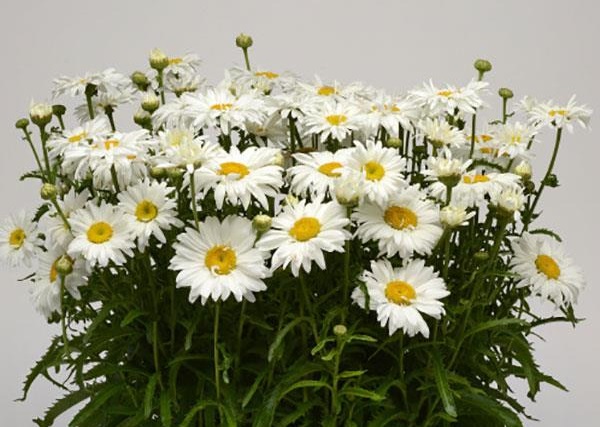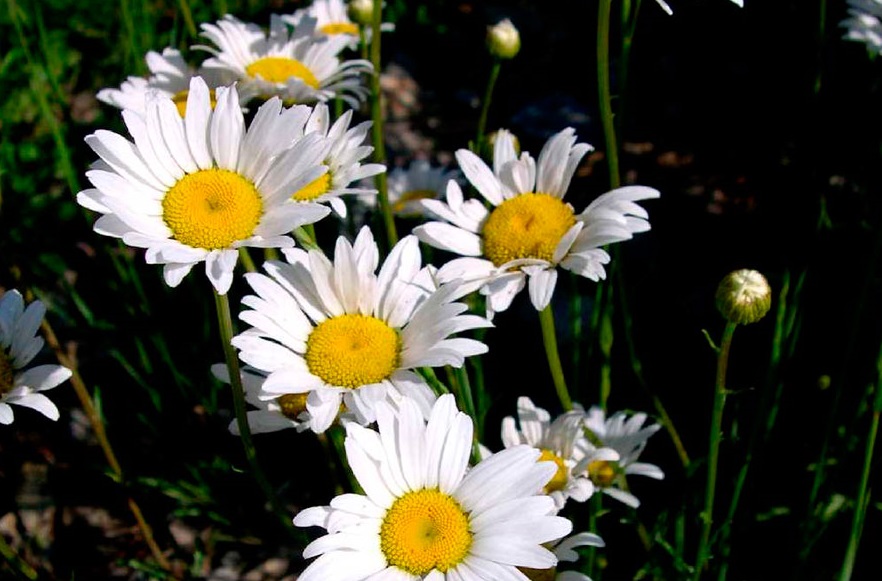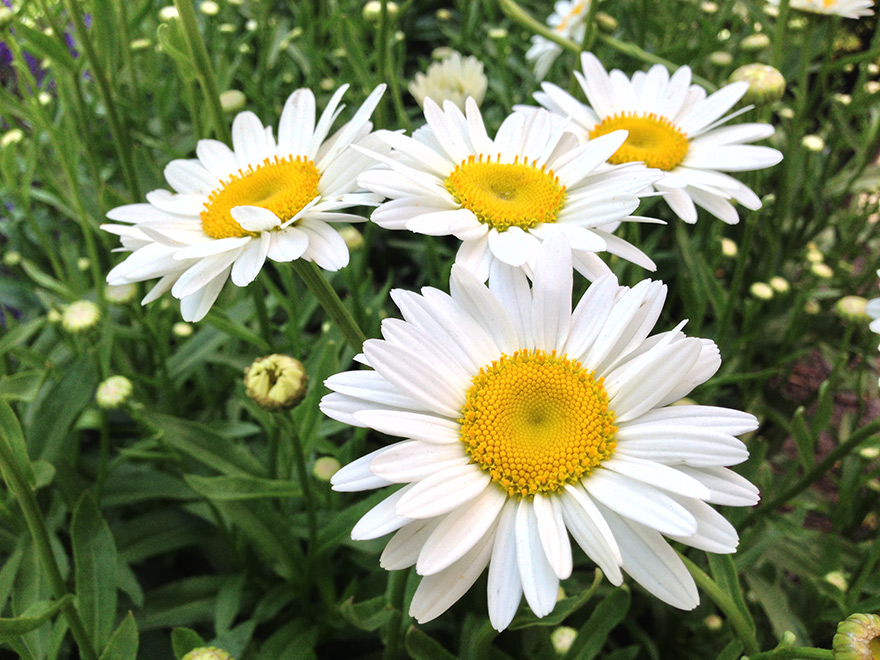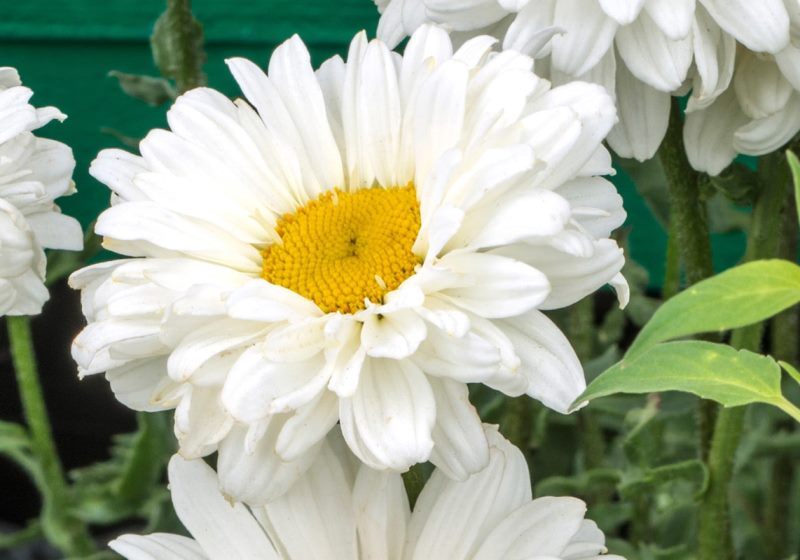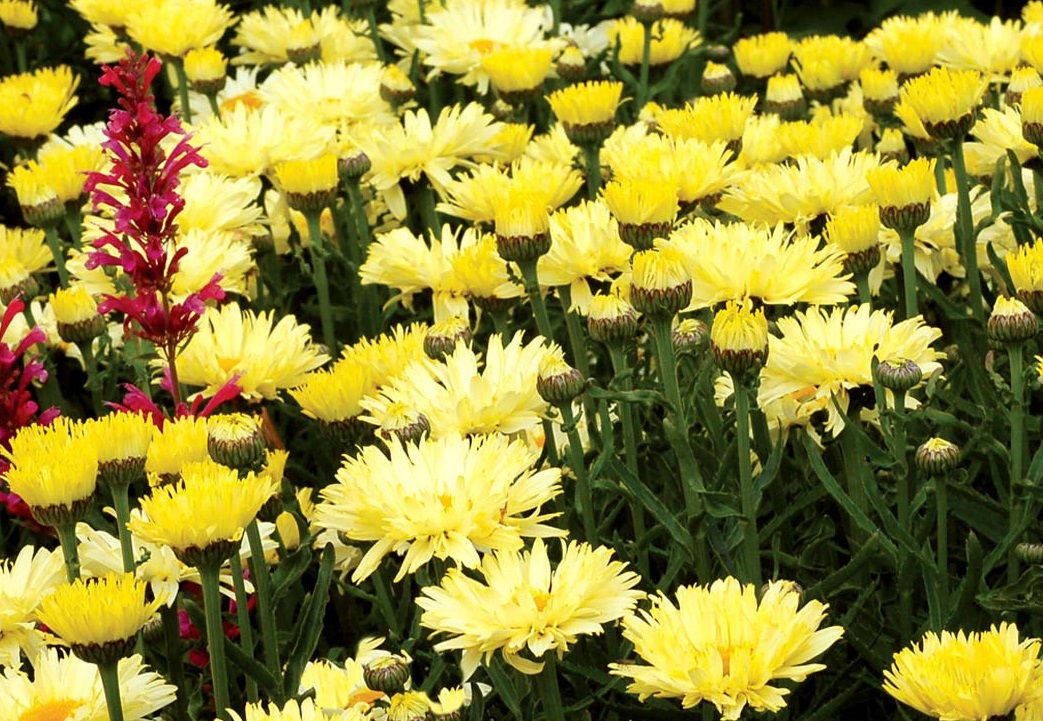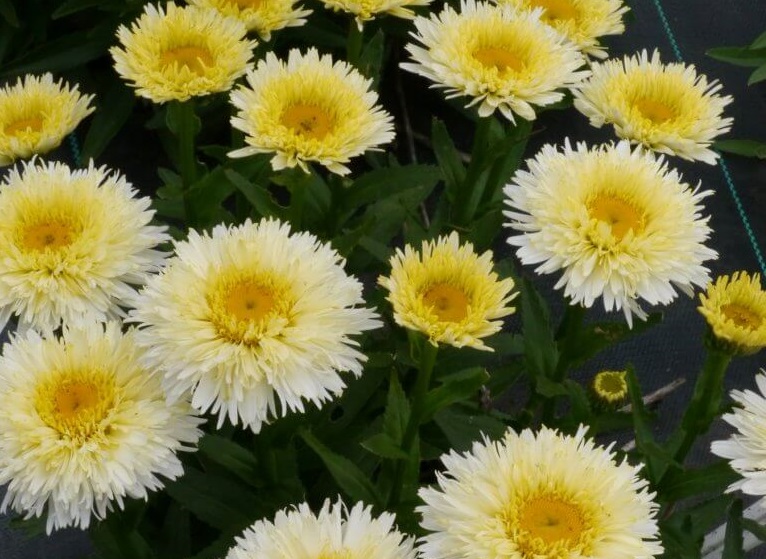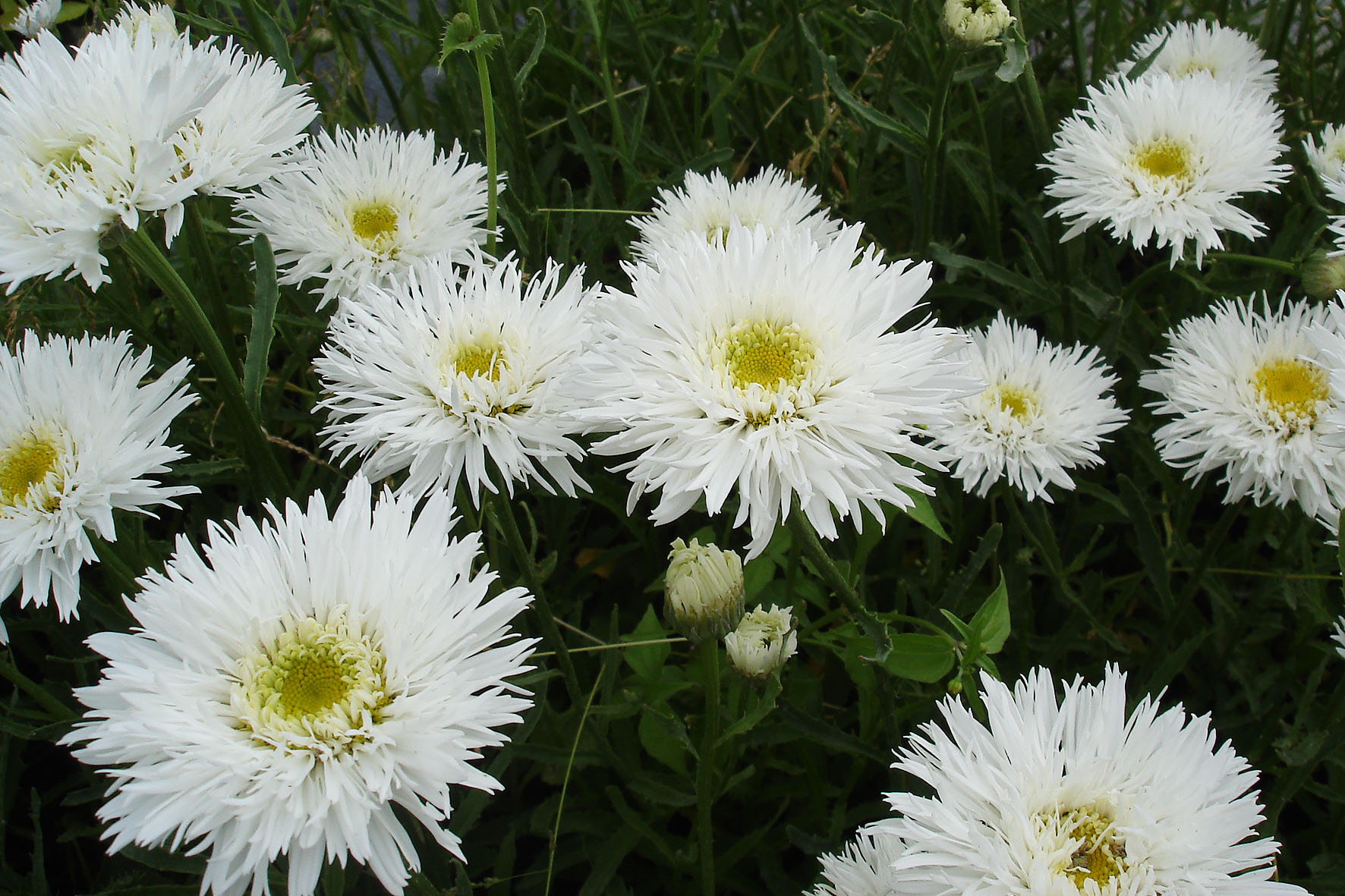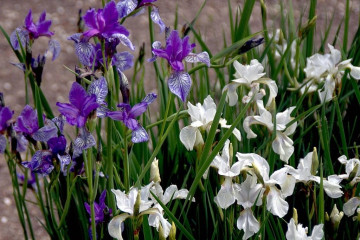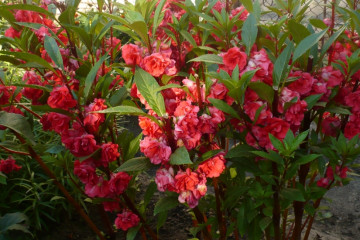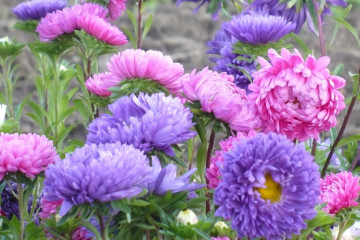Nivyanik ordinary - planting and care in the open field
Content:
This flower is often called popovnik or meadow chamomile, but in fact, the correct name for the plant is daisy. It can often be found not only in personal plots, but also in flower arrangements created by landscape designers. The simplicity of cultivation, combined with high decorativeness, brought universal love to the nyvyanik.
Common cornflower or leucanthemum
The plant belongs to the Asteraceae family. Very common in the mountains of Europe. In Latin it is read as "leucanthemum" and has about 20 species. Among modern varieties, there are many varieties that differ in the height of the bush and the appearance of the inflorescences.
The predecessor of all species is the common daisy or leucanthemum vulgare (Latin). It is a herbaceous perennial plant. Has a developed root system that has a reddish tint. Shoots can reach up to 1 m in height, covered with whole leaves with a crenate edge. The diameter of the flower is on average 8-10 cm, the marginal petals are white, the median ones are tubular, yellow.
Various types of cornflower are used in group plantings on lawns and against the background of ornamental shrubs, as well as in rabatkas, on flower beds and for cutting. In water, flowers do not lose their decorative effect for 7-10 days.
Variety of types of daisy
Among the variety of daisy species, two separate groups can be distinguished, each of which deserves attention. The first is Crazy Daisy terry chamomile, which is better described separately. The second can be attributed to the varieties of common daisy, or rather the most attractive and popular of them.
Terry chamomile Crazy Daisy
The flowers of this large-flowered perennial look very much like an aster. The flower petals are dissected and have a slightly "disheveled" appearance. Against the background of dark green foliage, snow-white inflorescences look very impressive.
Nivyanik Crazy Daisy is often used by landscape designers in drawing up flower arrangements, and florists - for bouquets.
Common Nivyanik varieties
There are several varieties of common daisy that deserve special attention. They vary in bush height and flower size, but they are all very decorative.
Maine Queen
The size of the bush is quite compact - the height is no more than 50 cm. Attractive flower baskets look very decorative against the background of dark green glossy leaves.
Maxima kening
A very tall plant - shoots reach 1 meter in height. The inflorescences are large, 10-12 cm in diameter, the petals can be arranged in one or two rows.
The core of individual flowers is tubular and bright yellow.
San - Souci
The height of the shoots of this plant ranges from 90-100 cm. Flowers consist of a yellow core and petals located around it in 6-7 rows. The length of the petals is up to 50 mm, and the diameter of the inflorescences is up to 12 cm.
Silver spoons
The bush is tall, the length of the shoots is more than 120 cm.
The peculiarity of the variety is the unusual shape of the petals. They are not fully open, tubular at the base, their shape resembles a spoon.
The middle flower is large, yellow, with a greenish edge.
All the varieties presented above are very decorative and at the same time, each is beautiful in its own way. Thanks to this variety, it is possible to choose the variety you like the most. Also noteworthy are Nivyanik Alaska, Victorian Secret and Real Glory. All of them are unpretentious and easy to care for. Another notable variety is the Silver Princess. Not only the flowers of this plant are beautiful, but also the deep silver color of the leaves.
New varieties of nivyanik
There are several completely new varieties of daisy that amaze with the beauty of the inflorescences. They are quite different from the common daisy in the color of the petals and their number. Such flowers are already referred to the groups of the splendid nivyanik and the largest nivyanik, in which varieties with double and semi-double inflorescences have already been collected.
Nivyanik Goldfinch
This species can be attributed to the most decorative and unusual varieties. This terry daisy has a yellow shade of petals, which, as it wilts, changes to cream.
The size of the bush is compact, the height does not exceed 60-70 cm. Chamomile Goldfinch, as the plant is sometimes incorrectly called, has a long flowering - from June to August.
Nivyanik Kings Crown
The terry flowers of this plant are not at all like ordinary chamomile. The petals are arranged in several rows, and their size decreases from the edge to the middle.
The color of the petals is also very unusual - there is a smooth transition from light yellow small petals in the middle to white along the edge.
Nivyanik Aglaya
Refers to the varieties that are united by the name "Nivyanik the greatest". The flowers of this plant are double, narrow petals are densely arranged around a small yellow center.
Landing in open ground
If you carefully read the description of the species, it becomes clear that it is not at all difficult to grow such a beautiful plant. Any variety you like can be grown in seedlings from seeds.
Further, it will be described in detail when to plant a daisy for seedlings, why growing from seeds involves the regular purchase of planting material, and the seeds of the plant collected with their own hands are likely to disappoint the gardener.
Seeds for planting
When choosing seeds, you should pay attention to the variety and labeling. It is better to give preference to trusted producers - such seed is of better quality.
It should be borne in mind that double and semi-double varieties are problematic to propagate with seeds obtained from their own plantings. So meadow chamomile can multiply, but a varietal daisy cannot be grown in this way.
Plants obtained in this way will either have simple flowers or have partially lost their qualities.
Growing seedlings
Sowing seeds of the daisy is carried out from the end of February to the beginning of March. This plant has a huge advantage - it will be possible to admire the flowering already in the current season.
The seeding process is simple and typical for all flower crops.
Step by step it looks like this:
- A drainage layer of broken brick or fine gravel is poured onto the bottom of a flat container.
- A nutritious soil is poured on top so that a finger thickness remains to the edge of the container.
- Watering is carried out with warm water.
- The seeds are spread evenly over the soil surface.
- A small layer of soil is poured on top, about 10 mm thick.
The container need not be covered, the seeds will hatch pretty quickly.Until the emergence of seedlings, the crops are kept at a temperature of 20-21 degrees, and when seedlings appear, it is lowered by 2-3 degrees.
After a month, you can feed with a weak mullein solution. At the age of 40-50 days, young plants should be cut into separate containers and when they take root (after 4-5 days), a second feeding with organic matter or mineral fertilizer should be carried out.
Choosing a landing site
Nivyanik prefers sunny places, sheltered from the wind. The soil for planting needs nutritious, pre-filled with organic fertilizer.
Avoid places close to groundwater and water accumulation after snowmelt. This plant does not tolerate waterlogged soil. If it is not possible to avoid such places, then a good drainage layer should be poured on the bottom of the planting hole during planting.
All types of daisies, and especially ordinary ones, are capable of spreading over the site by self-seeding. To avoid thickening of the plantings and the germination of the flower in the wrong places, you should remove the wilted flowers before the seeds begin to ripen.
Landing in the ground
Starting from the end of May, you can start planting a perennial daisy in open ground. 3-4 weeks before planting, the seedlings begin to harden. This implies holding containers with young plants in the open air. The residence time in such conditions is gradually increased.
For planting, prepare holes, water them abundantly and place one seedling in each. After filling the holes, re-watering is carried out. It is better to mulch the plantings right away - this will prevent the rapid evaporation of moisture from the soil.
Caring for an ordinary cornfield in the open field
This beautiful flowering plant requires little maintenance. It will be enough to carry out activities according to the formula standard for all colors of open ground.
It includes:
- Watering. Nivyanik is able to withstand a short drought. Watering is carried out as the soil dries up at the rate of 1 bucket of water per 1 square meter of planting. The average frequency of watering is 1-2 times a month.
- Top dressing. Provided that the soil is properly prepared, the need for fertilizers will arise only for 3-4 years of growth. As a top dressing, you can use a weak mullein solution or a complex mineral fertilizer. Watering is required the day before fertilization.
- Weeding and loosening. The next day after watering, the soil is loosened. It is also necessary to carry out weeding. You can mulch the soil around the plantings and the need for these works will almost disappear.
Nivyanik is not very susceptible to diseases and attacks of pests. With proper care, there are hardly any signs of deterioration in the appearance of the plant.
With proper care, the daisy bushes will actively grow and bloom luxuriantly throughout the season. After the end of flowering, the length of the shoots is shortened and the flower does not lose its decorative effect until the very cold weather.
The unpretentious nivyanik has long taken root in the plots and is found everywhere. New varieties of this plant differ significantly for the better in the shape and color of the inflorescences, and also stand out for the size of the bush and the length of the shoots. Each variety is beautiful in its own way, and growing the one you like can be quite simple.
